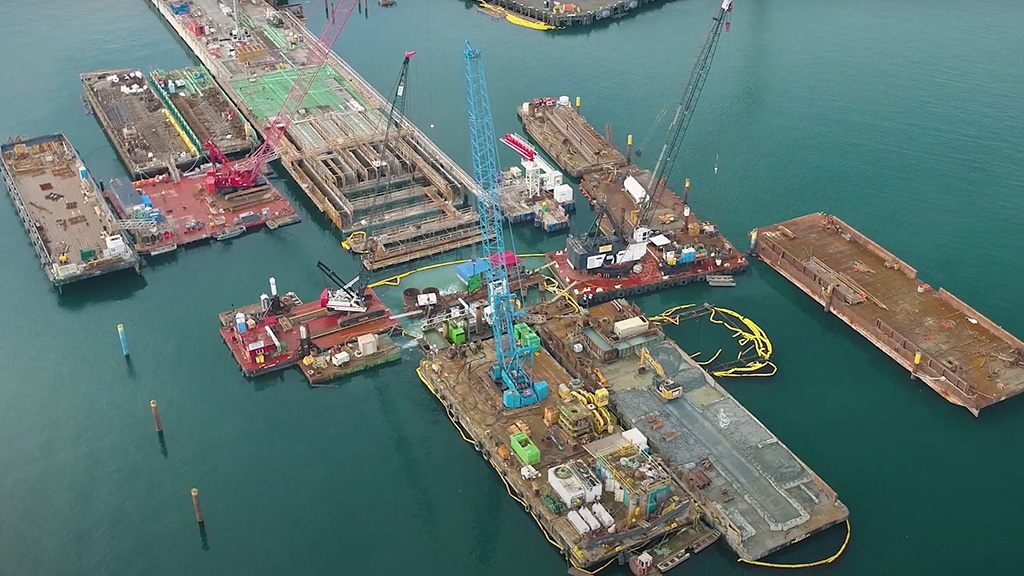Defence Construction Canada executives say they are prepared to ramp up support for Canada’s Department of National Defence as the federal government makes new commitments in a changing world.
Three DCC executives offered an overview of the federal agency’s achievements over the past year and highlighted new initiatives during a prerecorded video posted on its website recently.
Three major projects spotlighted relate to infrastructure to accommodate recent defence commitments, including the A/B Jetty Recapitalization project at CFB Esquimalt, B.C. that will support new ships for the navy and another project to build a new hangar and other infrastructure at Cold Lake, Alta. and Bagotville, Que. to house Canada’s new fighter jets.
“Fiscal ‘22-‘23 was another year of significant successes and achievements for DCC as the world changed and the defensive security environment evolved with it,” said Moreen Miller, chair of the DCC board of directors. “DCC remains steadfast in its ability to serve Canada.”
CFO Marie-Josee Lacombe reported DCC tendered approximately the same number of contracts in the latest fiscal year as the previous year, awarding 1,400 contracts valued at $668 million. DCC operates on a fee-for-service basis and receives no funding from the federal government. It operated in the black last year with a surplus of $8 million.
Lacombe anticipates contract expenditures will exceed $1.1 billion in 2022–23, then begin to increase to about $1.5 billion for the next four years, due to the jet fighter accommodation project, and jetty project and the Canadian Surface Combatant Project, the navy’s acquisition program to build 15 multi-role ships to replace the retired Iroquois-class destroyers and the Halifax-class frigates.
The A/B Jetty project involves upgrading infrastructure to support ships in the current navy fleet including the new Arctic/Offshore Patrol Ship and Joint Support Ship.
The DCC’s website said the $743-million project to replace 70-year-old jetties consists of three contracts for the design, demolition and construction of the new jetty.
Work includes extending the utility corridor, dredging the seabed, demolishing B Jetty, preparing the site and constructing the new B Jetty portion.
There will also be two new rail cranes procured and installed, to be used for the loading and unloading of warships.
The new jetty will be constructed on pipe-piles that will be anchored into the bedrock.
Heavy reinforced concrete beams and decking will tie the piles together.
EllisDon will be undertaking both ends of the Future Fighter Capability Project in Quebec and Alberta, building two super hangars at 4 Wing Cold Lake and 3 Wing Bagotville. The $525-million contracts include operational headquarters for the squadrons that will fly the jets as well as security, IT, maintenance and training facilities.

DCC president and CEO Derrick Cheung also referred to a DCC project overseas — a billion-dollar DCC project to improve roads and utilities, build a marshalling area and construct new compounds in Latvia.
“This critical infrastructure will support the Canadian Armed Forces members who are contributing to NATO’s defence of Central and Eastern Europe,” said Cheung.
Leung also reported the DCC has established a new Pacific region office separate from its western regional office.
The move will support DND real property operations in British Columbia more effectively and it will also give the DCC’s western regional office more capacity to support projects across the Prairies and overseas.
Additionally, the executives offered an overview of ESG successes including a new high bar in Indigenous procurement.
In the past year, Miller said, the DCC surpassed the government’s target of awarding five per cent of contracts to Indigenous businesses through its joint Indigenous procurement strategy with the DND.
This year, the DCC awarded 9.8 per cent of its contract value to Indigenous businesses for a total of $65 million and more than 90 contracts. The previous year the award percentage was 7.3.
“This is a really great increase,” said Miller. “We don’t wait for Indigenous suppliers to come to us, you reach out to them to learn about their capabilities and discuss ways they can subcontract with general contractors, and explain our strategy and processes.”
Follow the author on Twitter @DonWall_DCN




Recent Comments
comments for this post are closed